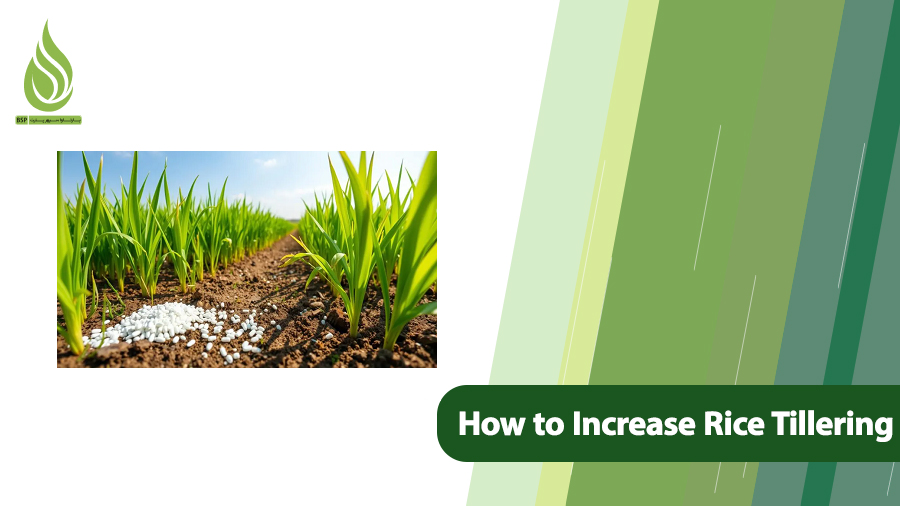
How to Boost Rice Tillering: Key Tips for Farmers
Rice tillering is one of the most critical stages in the growth of this staple crop, directly linked to higher yields and better product quality. The more tillers a rice plant produces, the greater the number of panicles (or heads), leading to a more bountiful harvest for farmers. In this article, we’ll explore the key factors that influence rice tillering and introduce essential fertilizers that can boost it. Stay with us as we break it down step by step, drawing on proven agricultural practices to help you optimize your rice fields.
What Is Rice Tillering and When Does It Begin?
Tillering refers to the process by which rice plants produce side shoots or branches from the main stem. These tillers grow independently from the primary stem, and under favorable conditions, they develop into full stems that bear panicles. The period during which these secondary stems form and grow is known as the tillering stage.
Each tiller has its own roots, stem, and leaves, allowing it to function autonomously from the main plant. A higher number of tillers means more panicles and, ultimately, more rice grains. Stronger tillers lead to better overall plant growth, increased resistance to stresses, and higher productivity in the paddy field. In ideal conditions, each rice plant can produce four to five tillers. Over time, the roots of these tillers deepen, enabling better absorption of nutrients and moisture from the soil.
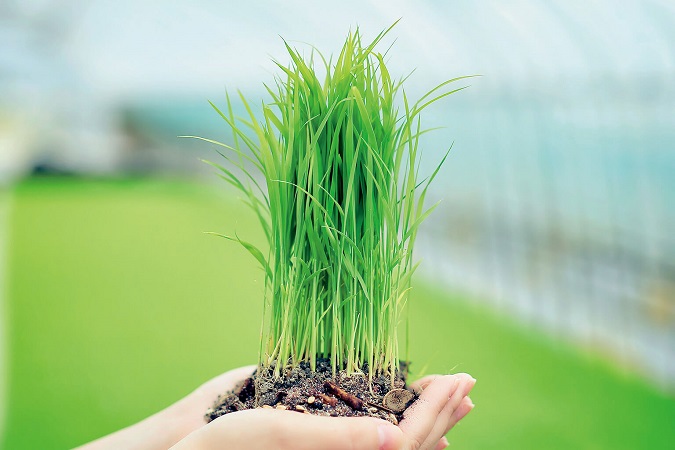
Defining Rice Tillering
Tillering is the production of lateral stems from the main rice stem, which can boost the number of panicles and overall yield. It typically starts two to three weeks after transplanting and continues until the initial panicle formation. This phase usually lasts 35 to 55 days. Even after panicles begin to form, some tillers may keep growing. By using the right fertilizers and following best cultivation practices, farmers can significantly enhance tillering.
To put this in perspective, tillering is a fundamental trait in cereal crops like rice, as it determines the number of productive shoots per plant. Research highlights that tillering capacity can vary based on genetic factors, environmental conditions, and management practices. For instance, some rice varieties are bred specifically for higher tillering potential, which can lead to sustainable increases in food production.
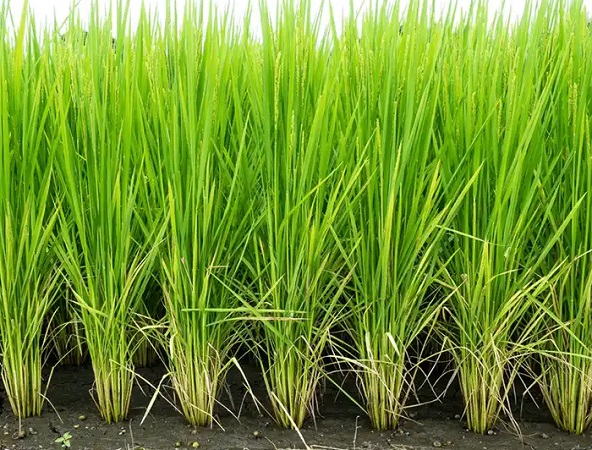
How to Boost Rice Tillering
Stronger tillers mean improved growth, greater plant resilience, and enhanced efficiency in the rice paddy. Let’s dive into the strategies that can help achieve this.
The Role of Fertilization in Strengthening Tillering
Proper fertilization can dramatically increase tillering. Here are the key fertilizers that support better tillering:
Nitrogen-Based Fertilizers
Nitrogen is the primary driver of vegetative growth and tillering. It enhances photosynthesis and keeps the plant green and vigorous. Providing adequate nitrogen helps extend tiller length and promotes more branches. Experts recommend applying nitrogen fertilizer in two stages: first before transplanting seedlings, and second two to three weeks later. Nitrogen is essential for plant growth, but it must be used at the right time and in the correct amount. Overapplication can lead to excessive vegetative growth at the expense of grain production. The exact amount should be determined by soil testing.
Recent studies emphasize that optimized nitrogen application can improve tiller quality and stabilize yields with less input. For example, precise delivery of nitrogen at the tillering stage has been shown to enhance grain yield and nitrogen use efficiency in rice systems. Delaying the timing of tillering nitrogen fertilizer can further improve yields and nutrient efficiency. In practice, large amounts of base and tillering fertilizer promote secondary tillers, but careful management is needed to avoid unproductive ones.
Phosphorus
Phosphorus is another vital fertilizer for the tillering phase. It aids in energy transfer and root development for tillers. Stronger roots improve nutrient uptake from the soil, leading to healthier plant growth. It’s best to apply phosphorus in multiple doses for maximum effect, ideally during land preparation and at transplanting.
Phosphorus promotes strong early plant growth and a robust root system, which is crucial for maximum tillering. In drill-seeded rice, for instance, adequate phosphorus ensures vigorous tiller development.
Potassium
Potassium fertilizer can boost the plant’s resistance to pests and diseases. Agricultural experts suggest applying potassium in several stages: as a base fertilizer before transplanting, during tillering, and at panicle initiation and filling.
Potassium helps in overall plant health, reducing susceptibility to stresses that could hinder tillering.
Micronutrients
Micronutrients like iron, zinc, manganese, boron, and copper are needed in small amounts but are crucial for plant health and growth. Zinc, in particular, plays a key role in increasing tillering, improving root and stem development.
Fertilization, including micronutrients, controls tiller numbers through various mechanisms, such as transcriptional regulation. Compound fertilizers and branch fertilizers have been shown to promote early tiller growth and increase agronomic traits.
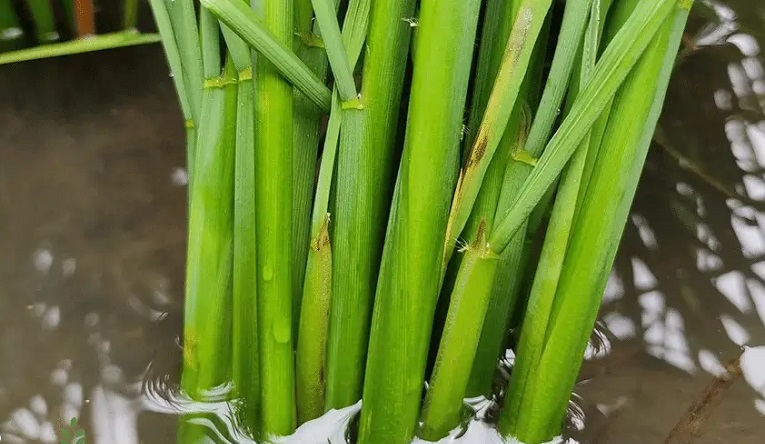
Effective Fertilization to Boost Tillering
The best results come from applying fertilizers in multiple stages, especially before tillering begins. This ensures nutrients are available when the plant needs them most.
In addition to these, silicon fertilizer under straw return conditions can reduce nitrogen needs while supporting tillering. Research on fertilization decisions using advanced methods like drones can further optimize nutrient application at the tillering stage.
Proven Methods to Boost Rice Tillering
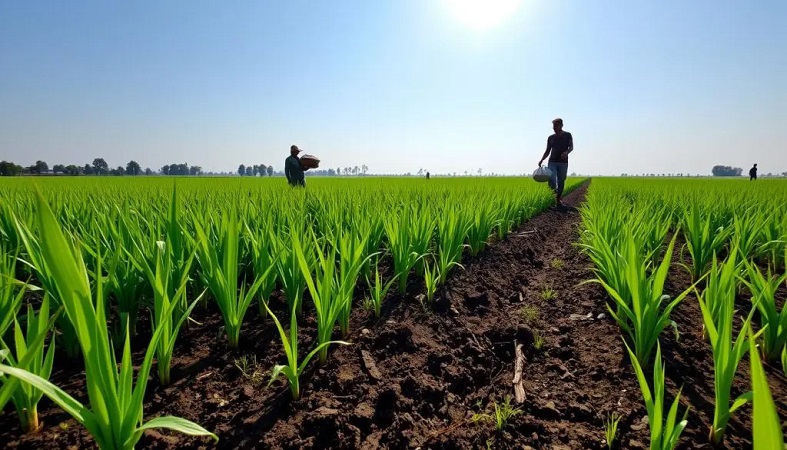
Choosing the Right Seeds and Varieties
Some rice varieties have a higher natural potential for tillering. Using certified, improved seeds lays the foundation for healthy, vigorous tiller growth. Fresh, high-quality seeds ensure strong initial growth and better tillering.
Genetic factors play a big role; weedy rice and certain varieties exhibit enhanced tillering through nitrogen metabolism adjustments. Optimal tillage depths can also enhance tillering by improving soil water content and yields.
Optimal Planting Density
Planting too densely creates competition among plants, reducing tillering. Too sparsely, and you lose out on plants per area. The sweet spot is about 20-25 plants per hill or roughly 200,000 to 250,000 plants per hectare.
Studies confirm that optimal seeding density maximizes yields; for example, a density of 25 cm x 17 cm is suitable for high-yielding hybrids. Below optimal plant density, yields decline, but at half the optimal (12.5 plants/ft²), yields can still reach 90% of maximum. Higher densities may require more nitrogen to support tillering. For conventional japonica rice, 195 seedlings per m² is ideal, while for indica-japonica hybrids, it’s 120. Combining nitrogen dosage with planting density, like 108 kg/ha nitrogen at 33.3 x 10⁴ hills/ha, promotes tillering.
Water Management
Maintaining a shallow layer of water on the field improves oxygen supply and facilitates tiller growth. Draining excess water prevents root suffocation. Consistent soil moisture and adequate irrigation stimulate tillering. Constant flooding might reduce it. Smart irrigation systems are excellent for better growth, preventing issues like root rot and poor quality.
Alternate wetting and drying (AWD) is a key technique that saves water while maintaining yields. Cyclic submergence of 5 cm after establishment is recommended. Laser land leveling improves water efficiency. Sheet-pipe subsurface irrigation is an innovative method for efficient water use in rice. Deep water delays tillering but controls weeds. Near-saturation from transplanting to tillering, followed by shallow submergence, is optimal.
Weed Management and Control
Weeds compete for light, water, and nutrients, hindering tillering. Timely weeding—mechanical or chemical, gives rice plants more room to tiller.
Water seeding suppresses weeds like red rice.
Environmental Conditions
Extreme temperatures reduce tillering; the ideal range is 77-86°F (25-30°C). Stress from cold or heat limits it. Light and temperature also affect tillering dynamics based on sowing dates.
Identifying Common Pests
Pests like rice flies and stem borers can damage plants. Early detection is key. Use natural, biological methods or controlled pesticides. For stem borers, refer to specialized guides.
Integrated pest management (IPM) is effective. Planting trap crops like Napier grass diverts stem borers. Proper leveling and irrigation every 3-4 days help. Enhancing natural enemies in ecosystems provides biological control. Cultural practices like draining fields control pests like rice seed midge. Early planting avoids severe disease and insect issues. Tillering capacity varies with pest damage.
Additional Tips to Boost Rice Tillering
Using well-rotted manure or organic matter improves soil structure and stimulates tillering. Planting at the right time increases tillering chances. Fertilizer application in rice fields often involves broadcasting or foliar spraying. For spraying, do it early morning or late afternoon when it’s cooler.
The impact of ammonium sulfate in rice fields is noticeable. Adequate application can boost productivity and rice tillering. Crystallized ammonium sulfate is a good option for paddy fields. For bulk purchases, check out Barsava Sepehr Part. This supplier is one of Iran’s largest producers of ammonium sulfate, selling domestically and internationally.
Expanding on Sustainable Practices
To further enhance tillering, consider the system of rice intensification (SRI) methods, which can lead to more grains per tiller—up to 400 in some cases. Reduced tillage with best water practices increases sustainability. Direct seeding, AWD, balanced fertilization, and resistant varieties significantly improve yields. Plant density affects tillering; low density increases it, high density reduces it, balancing panicle numbers.
Transplanting older seedlings or optimizing seeding densities in trays can enhance tillering patterns. At optimal densities, tiller density reaches 60 tillers/ft², leading to high panicle density.
By focusing on these strategies, farmers can achieve higher rice production. Tillering optimization not only boosts yields but also contributes to food security worldwide. With careful management, you can turn your paddy into a high-performing field.